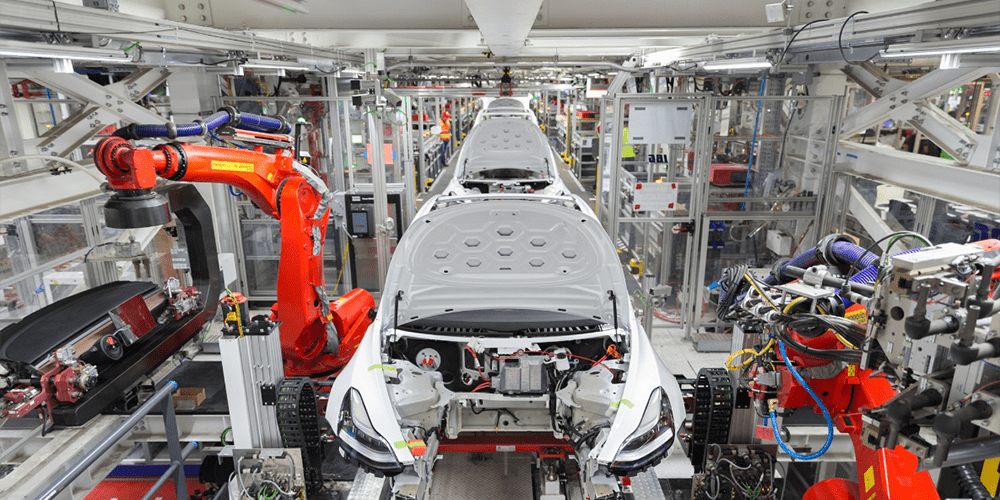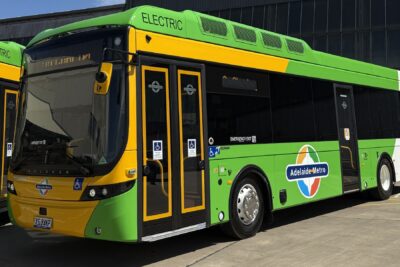Tesla to move a significant part of US production to Texas
Following the heated exchange between Tesla and California regulatory authorities regarding the re-opening of the Gigafactory following the Covid-19 pandemic, Elon Musk had announced that he would pack up and move. Now a decision has been made regarding production in Texas.
Business is booming for the Californian EV manufacturer as Model 3 production in Shanghai continues to ramp up. The still modest production figures in Q2 are mainly due to the Gigafactory 3 there. In addition, the local Chinese production on-site is reducing operating costs. From 2021 – Tesla has now confirmed this once again – Model Y will also be built in China and in Grünheide in Brandenburg.
At the same time, the Californian company is preparing to build a new plant in the USA. The location decision has now been made, says the annual report – without clarifying the “where”. In a later webcast, Musk confirmed that Austin had won the race. “We will build a breathtaking factory right on the Colorado River,” Musk announced. The factory will be open to the public and “basically be an ecological paradise”. The Tesla boss wants to substantiate these full-bodied announcements “soon” at a Factory Day: “People will be surprised how much there is to see.”
Texas had long seemed the favourite, but Tulsa, Oklahoma, was still hopeful. In Texas the announced Cybertruck and later also the Model Y is to be built for customers on the East Coast. Also on American soil, Tesla is planning to postpone the production of the electric truck Semi until 2021 and to build the new roadster.
Tesla has broken the 2,000 supercharger station mark worldwide. With 2,035 stations, this was six per cent more than in the first quarter and 28 per cent more than a year ago. The number of charging points rose to 18,100 (from 17,007), which also represents a quarterly increase of six per cent – and even 30 per cent compared to Q2 2019.
In the energy business, after a weaker first quarter ($293 million sales), Tesla’s second-quarter sales of $370 million were almost exactly the same as in the same quarter of the previous year. A total of 419 MWh of storage capacity was installed, with the business with both powerwalls and megapacks growing – the megapacks are also said to have been profitable for the first time in Q2, Tesla writes in the quarterly report. In the case of solar roofs, the installed capacity tripled after the winter, as expected. With some improvements to the solar systems, costs were reduced to 1.49 dollars per watt, which is about a third less than the competition.
There is no doubt that Tesla is emerging stronger from the first half of 2020, which was extremely challenging due to external factors. The quarterly figures, which are good in normal times but not euphoric, take on an outstanding dimension due to the omnipresent weakness of the international car market. The electric carmaker itself speaks of its “proven resilience”. The manufacturer attributes the profit to “fundamental operational improvements”. Costs associated with factory closures have also been offset by cost-cutting measures. Nevertheless, the uncertain mixture situation of the past months has left its mark: It remains to be seen whether there will be further business interruptions and how global consumer sentiment will develop in the second half of the year, the Californians write. No wonder: Their state is still one of the American Covid 19 hotspots.
After Elon Musk had confirmed in the context of the announcement of the latest quarterly figures that Tesla’s next US plant will be built in Austin, Texas, it is now clear that more models will be built there than originally known: While at first only the Cybertruck and the Model Y were mentioned for customers on the US East Coast, Musk now declared that the electric truck Tesla Semi, as well as the Model 3 for the eastern half of North America, will also be produced in Austin.
Until now, it was only known that the Semi would be built in the USA – but not where. Because of the different requirements of an electric truck, a separate plant would have been conceivable. Tesla apparently wants to use the first semi built in Texas for its own purposes, as Jerome Gullien, president of Tesla’s auto division and responsible for the semi program, said: “I want to be clear that the first few units, we will use ourselves, Tesla, to carry our own freight, probably mostly between Fremont and Reno, which is a fantastic test route. We’re going to prove that we have very good reliability.”
When part of the Model 3 production moves to Texas, it’s already been decided how the freed-up capacity in Fremont will be filled. The Tesla boss let it be known that the new Tesla Roadster will probably be built at the California plant.





1 Comment